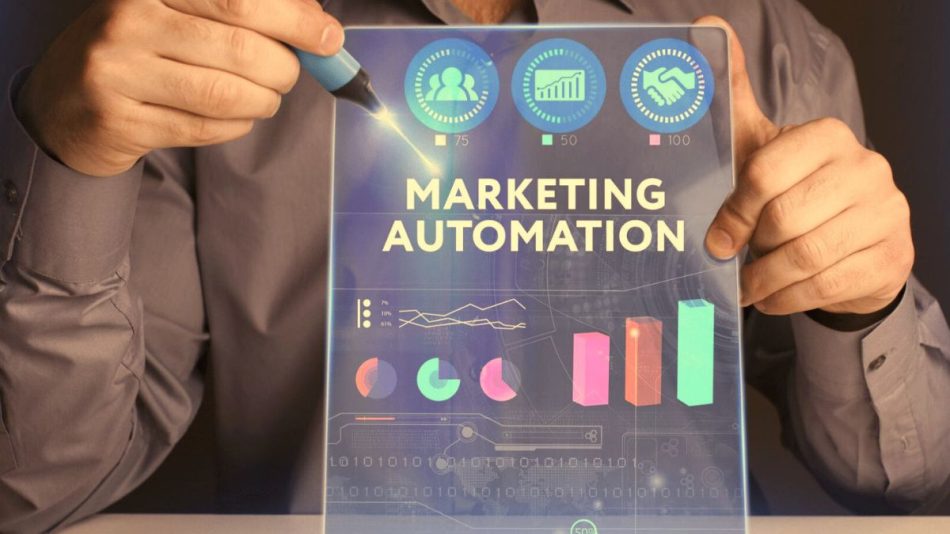What is Marketing Automation ( MA ), and what automation tools are used by digital marketing?
Why does implementing a Marketing Automation process on an e-commerce site by including it in an inbound marketing strategy increase conversions?
Marketing Automation can improve the results of marketing activities and produce conversions. To obtain the best results using MA, it is necessary to recognize automated marketing tools from those that are not correctly used. In this article, we will explain the areas of MA that can be automated and why they work so well.
Marketing Automation can improve the results of marketing activities and produce conversions.
To obtain the best results using Marketing Automation, it is necessary to recognize automated marketing tools from those that are not correctly. In this article, we will explain the areas of Marketing Automation that can be automated and why they work so well.
Marketing Automation (MA) refers to the automation of marketing operations. As is already the case with many enterprise systems, an MA system can replace simple, repetitive manual tasks, significantly improving operational efficiency. In addition to the fact that the way of marketing has changed compared to the past, it is necessary to keep up to date. Therefore, it is important not only to increase the speed of work with tools that realize marketing automation but also to constantly analyze and optimize the method of approach to acquiring potential customers.
This modern approach is necessary to build relationships with potential customers ( prospects ) and lead them through the established sales process up to the point of purchasing and then making them loyal to that brand or product. Easy to say. For the user to complete the entire Customer Journey, creating a combination of related strategies and marketing practices is necessary. Below are some of the most important functions to which MA tools apply.
Collect LEAD GENERATION information.
Acquiring new contact information is called Lead Generation. Lead management (lead) is one of the most fundamental functions of marketing automation. It can handle much user data, such as information from websites or business cards.
For example, managing a large amount of data for each customer, from purchase history to event participation, from contact details to survey results, is possible. If everything is managed on the system, sharing information and analyzing and segmenting customer trends and preferences is easy.
Each lead’s details are collected automatically and divided according to the segmentations set in the MA platforms. Real marketing automation software has been created, and Prestashop is also fundamental for the definition of marketing automation; in some cases, however, they have been incorporated directly into a CMR. This is the case with Hubspot, one of the best complete and high-performance marketing platforms that allows you to manage all activities in an automatic and structured way.
Collecting information about online activities
Site browsing history, time, and online behaviours such as purchase history and product browsing history in E-Commerce can be automatically collected for each lead.
This lets you know when and how a given “contact” made decisions to understand his behaviour pattern and preferences.
Collaboration on social media
In collaboration with various social media, analysis measures can be automated, such as leaving a “trace” when a specific pre-set keyword appears on social media.
Some MA tools can automate the publishing of social media posts, among other things.
Email marketing automation
Reading the information returned from an email marketing campaign is one of the main functions of MA tools. Email marketing can be automated, such as sending a predefined email to leads that meet specific criteria.
Marketing automation allows you to send emails at regular intervals to leads who meet certain pre-set parameters. Often, the sending of these emails arises from a subscription to the newsletter or the completion of a pop-up or a form inserted in a landing page created specifically to lead the user towards the goal.
Automatic content optimization
MA’s tool has a feature to automate email, e-commerce content, and displayed advertisements. It is based on the lead’s attributes and most recent action history. Preferences and situations are evaluated, and site content, including the ad, is personalized and distributed to each lead.
You can also use information about the effectiveness of outdoor advertising for new leads to optimize content based on consumer segment and taste.
Measurement of marketing effectiveness (ROI Return On Investment)
Managing a campaign is an essential operation that works with scenario creation. A series of measures by a scenario is called a campaign, and by managing this, a scenario can be implemented at an appropriate time depending on the situation. And the effectiveness of such measures can be measured automatically.
Through Marketing Automation, information such as conversions, navigation on targeted pages, etc. can be collected.
In marketing automation, users are classified through lead scoring. It involves assigning a score to each of the activities carried out by a prospect on e-commerce. The system adds the various scores until classifying the visitor as a lead, hot lead, etc. Based on this information, potential customers can be evaluated and segmented. In this way, a company can save time, excluding a potential customer with a low probability of completing the purchase.
While it is important to open doors as much as possible to get potential customers to close a deal, you need to read and select trends from detailed information, such as the number of clicks on links and the time spent on website pages.
Marketing activity automation flow using the MA tool
Marketing activities are organized around units called campaigns. A campaign can have various contents: a product awareness campaign, a cross-selling campaign, up-selling to existing customers or a discount campaign. Every campaign is a marketing funnel aimed at conversion. We could summarize the flow of automation of marketing activities using MA tools as follows:
- Adopting SEO measures automatically distributes content that attracts new visitors interested in the target product.
- Automatically capture lead information when a visitor interested in the target product downloads the item documentation from the product listing.
- Consultation of newly acquired leads via email marketing with scenario settings.
- Scoring and extracting leads with a certain level of expectation and sending targeted emails to targeted customers.
What can’t be automated with MA tools?
As I have explained so far, Marketing Automation tools can automate many parts of marketing activities. However, not all marketing activities can be automated, so you need to be aware of the areas that directly involve marketers.
For example, in automatic content optimization, what type of content is suitable for what type of lead, what type of scenario is tracked, what actions are taken in email marketing, etc., must be done by a marketer himself.
Despite the great help and benefits marketing automation provides, the whole process’s success will depend on the marketer’s ability to focus on planning.
Benefits of using Marketing Automation
What are the advantages of using Marketing Automation?
Firstly, as already explained, there is an advantage that many operations can be automated. So, for example, repetitive database tasks, thanks to MA, are likely to be easily solved.
Certainly, the introduction of an MA greatly reduces a person’s working hours, and consequently, the marketing team will also be smaller. When considering cost-effectiveness, it is important not to overlook labour costs. In some cases, labour costs are incurred more than the cost of introducing tools.
Another great advantage is the ease of managing customer information. By collaborating with other business systems and sharing information between departments, the entire company can work in a focused way. Collaboration with the sales department is crucial, especially in marketing. By connecting them together, you will be able to follow the customer from acquisition to loyalty.
In connection with customer management, the marketing capacity of the company itself also increases. In marketing automation, scenarios are created, leads are generated, and the leads are then selected and qualified.
In any case, acquiring these potential customers, “nourished” appropriately, enables companies to achieve sales and, therefore, conversion. As we have seen in the previous paragraphs, this series of flows is created by each function provided in the MA system.
Also Read : How To Make Your E-Commerce More Sustainable In Just a Few Steps




